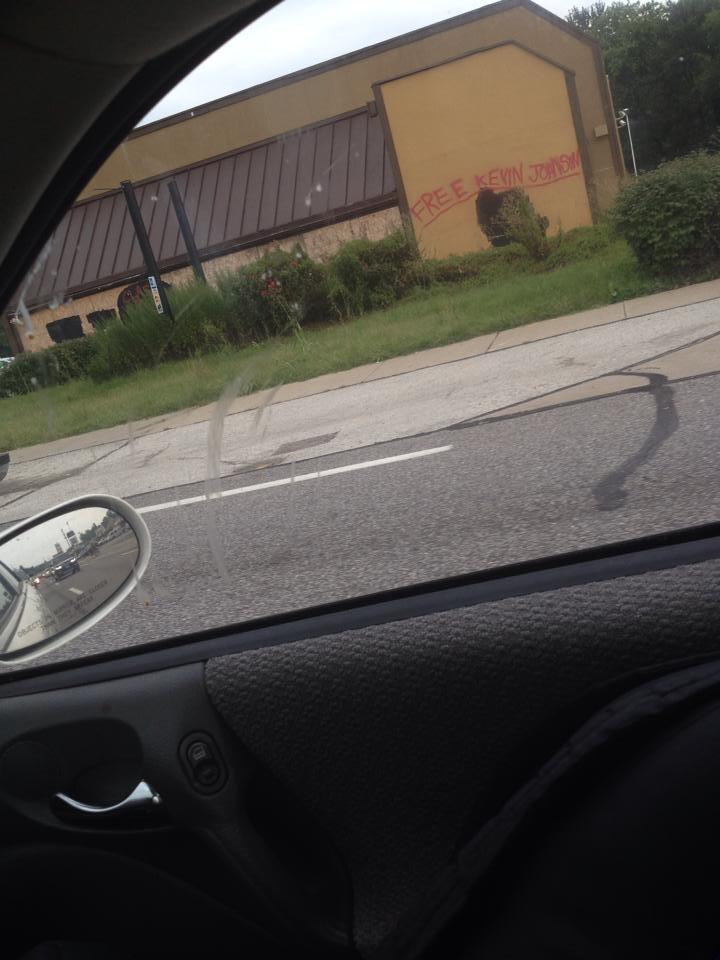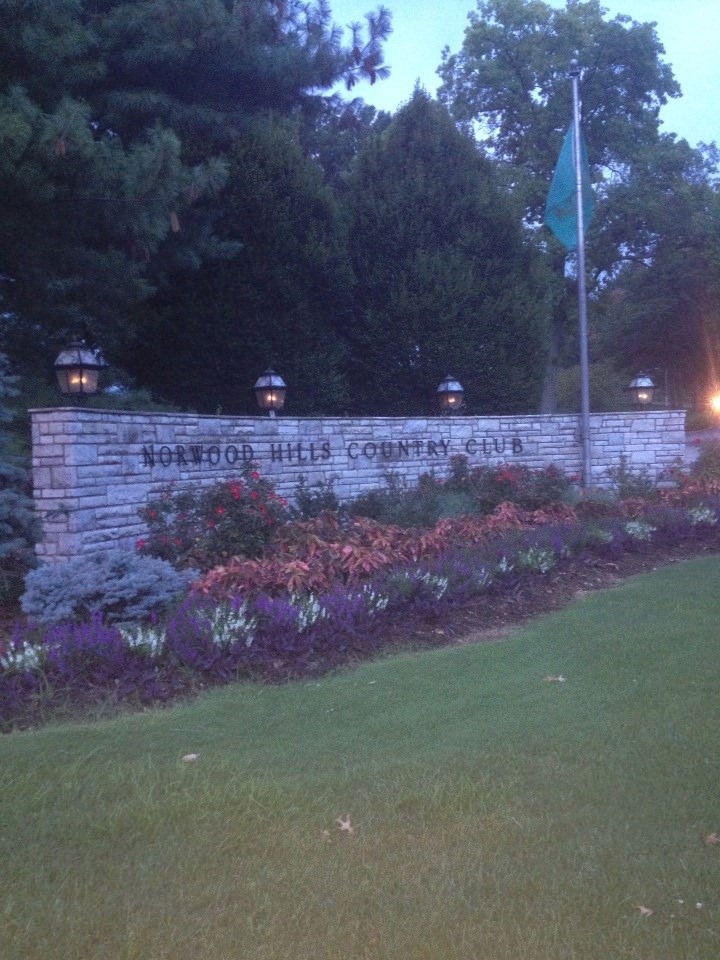“You are brave, but you are foolish.”
So I was told. I suppose there are worse things.
Last Saturday, I was embarking on the next stage of life in East Lansing, Michigan as a graduate student in African Studies at Michigan State University, with my dissertation focused on Nigerian Mormonism. With a fantastic program, an enthusiastic advisor, great resources, and reasonably good job prospects, I packed up my car and headed East. Wanting to stop by a Missouri church history site, I decided to take the Southern route on I-70. The Mormon frontier awaited After making a short stop at Liberty Jail (which was very nice—you should visit it, if you haven’t), I started for St. Louis.
Something prodded me not to drive by but to a little suburb called Ferguson. Was it inspiration? Was it morbid curiosity? Either way, it nibbled at me as I stepped into the car. I opened my GPS application and typed “Florissant Street” into the address.
Florissant Street is the site where Michael Brown, the young African-American man, had been killed by a white police officer only a week earlier. Protests and looting had been raging in the area since.
As I came closer to St. Louis, I wasn’t sure what to expect. Smoke? Fire? People screaming in the streets? The closer I came, the more underwhelmed I was. People walked around as they did in most cities. Cars came and went. I saw little of note, even as I came closer to the scene. Even a mile away, I saw little sign of the madness that the news networks were portraying. About two miles away from the site of the shooting, I saw this:

Surely, I had made a wrong turn.
I began to double-check my directions when traffic slowed to a halt. As I crept closer to the site, I looked to my right and saw an arresting juxtaposition of images: a Schlunk’s natural foods store next to a stucko wall with the words: “Free Kevin Johnson” on it. In 2007, Kevin Johnson, a 21-year-old African-American young man a little older than Michael Brown, killed Sergeant William McEntee, a Caucasian. During the trial, local high school students wore shirts repeating the wall’s declaration. (Link to story).
I drove closer to the scene of the protest, seeing protestors on my right and left. Traffic was almost at a gridlock. There were no police on the scene. Finally inching closer, a smiling African American man stood by, directing traffic through the lights. Cars honked all around me in support of the protestors. I stopped at the light; after all, that’s what you do.
“Come on now, drive on through,” the man told me congenially. I drove through, finally reaching a break in the traffic. I had driven down Florissant Street and come away entirely intact. Sure, I heard some cheers of “Black Power,” but clearly, no one particularly cared about my skin color but about “the system’s” skin color.
I could have driven on, knowing that I had seen more than many people in my circles would see. I almost did. But now that I had broken the ice, I couldn’t help but try to walk around—actually see what these people see on a daily basis.

Ferguson stands in stark contrast to the Norwood Hills Country Club; one might think it was as different as Holladay is from West Valley City. With dirty streets and run-down buildings, it bore the marks of urban blight—even neglect and badly in need of something. Well-spent government funds or socially-minded private investment. But something.
I pulled around again to find a parking spot, only to find that the police had now blocked all cars from entering the protest site. I had to park a mile away; I changed my Brigham Young University t-shirt for a slightly wrinkled and pretty dopey shirt I owned in high school with an overweight guy holding a cup of coffee. Add in some berkinstocks and a few day’s growth of facial hair, and you have a slouchy guy who doesn’t pose a threat to anybody.
The closer I came to the protest, the more stark the quiet was. Police blocked every entrance to Schlunk’s. No one roamed the street. It had transformed from a tense—but peaceful—protest into a lockdown. What once had been an organized grassroots protest had become a roaming group of African-Americans, clearly uneasy with the strong (and overwhelmingly white) police presence. Then the march commenced.
[youtube id=”20Xj5Hk37eY” width=”600″ height=”350″]“Hands up, don’t shoot,” the march leader yelled into her bullhorn.
“Hands up, don’t shoot,” the crowd of about 50 responded in kind.
“We are Mike Brown,” they chanted in unison. “We are Mike Brown.” Throngs of blacks stood by, filming the activities.
A bus drove down the street, filled with police officers. Meanwhile, a gaggle of (largely non-black but certainly not all white) film reporters stood feet away from the head of the protest. Suddenly, the crowd turned to their left where the bus had parked. They began to jeer at the police, waving hello in mockery. A protest leader barked at a man nearby: “Give me the bullhorn.”
“Leave them the hell alone,” he ordered the crowd. “Leave them the hell alone.” The crowd backed down. He and some others directed the crowd to march down another street. They congregated at the street corner to await further instructions. As I walked back to the car, I heard a man say under his breath: “That’s a lot of police.” I turned around, seeing a float of police officers descending on the protest site.
Ferguson, MO seems an unlikely stop for a white Mormon guy from Western Wyoming. “Stay safe,” several of my friends urged me. But at no point did I feel unsafe. At no point did I feel my life was in danger. At no point did I feel threatened. At no time did anyone indicate to me verbally or otherwise that I did not belong there. Two people even chatted with me, as I was one of a handful (perhaps three) of white, non-reporters present.
Mormons have a particularly tortured history when it comes to race relations. We strive to forget it. We want to tell ourselves that Official Declaration #2 changed everything, that it’s no longer a concern, and that we should all just move on, get over it, and get on with life. And that’s an easy thing to say when it’s not your life or your bodies, or your children. Privileged whites tend to have an easier time “getting over” deaths like William McEntee. Ignoring the world of the slums is a strong temptation when you live the life of privilege.
The death of Sergeant William McEntee was a grave evil. And maybe Michael Brown’s was too. But ignoring the plight of people suffering—regardless of their skin color—is not something we will just be able brush off at the judgment day. Do I know the details of what happened to Michael Brown that night? I don’t. And none of us is in a place to “take a side” on the matter—except that “the worth of souls is great in the sight of God.” The souls I saw that day on Florissant Avenue were not looters. They were not criminals. I saw a black man with a three-piece suit and a cane among them. Whatever sins might happen at night, we are wrong if we use that to characterize the anger in the streets of Ferguson.
I traveled Eastward, enjoying the luxuries of my air conditioning and with the full knowledge that a wonderful apartment at an affordable price awaited me. But even in our travels through the sunny country of privilege, we should always try to stop by Ferguson.

Richie T posted this, but who actually wrote it? Or are you actually embarking on an advanced degree in African studies, Richie?
I will make the adjustment in the post…but it is written by our very own Mormon History Guy, Russell Stevenson.